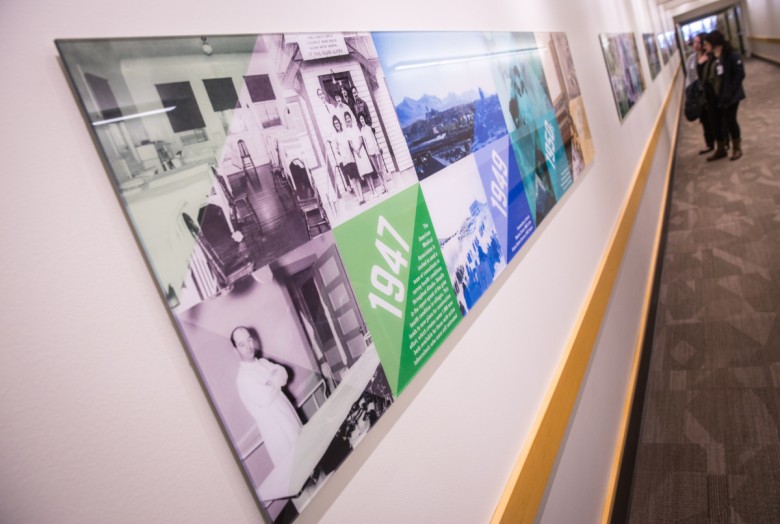History of Tribal health and ANMC on display in hospital
March 31, 2017
Thanks to a new visual history installation, visitors to the Alaska Native Medical Center can take a stroll through the history of our health and medical achievement at the ANMC hospital.
A timeline chronicling important events in Alaska Native health and the Alaska Native Tribal Health Consortium now hangs in the north side, first-floor hospital hallway, just before the sky bridge to Patient Housing at ANMC. The seven-panel installation includes historical photos of the progress of our people in the health care field. It begins in 1947 when the American Medical Association visits Alaska and ends in 2017 with the opening of the six-floor, 202-room patient housing facility.
Here are a few important milestones detailed in the timeline:
1949 – Construction of Alaska Medical Center of the Alaska Native Services begins
1953 – Anchorage Medical Center of the Alaska Native Service (later renamed the Alaska Native Medical Center) opens in downtown Anchorage
1975 – Congress adopts Indian Self Determination and Education act; American Indian and Alaska Native people can assume control of federal programs for Tribes
1976 – Congress adopts Indian Health Care Improvement Act to address health disparities between the US population, and American Indian and Alaska Native people
1997 – ANMC hospital on Tudor Road is dedicated; US Congress creates the Alaska Native Tribal Health Consortium under Appropriations Legislation, Section 325 (Public Law 105-83)
1998 – Alaska Area Native Health Service signs a contract transferring statewide services to the Alaska Native Tribal Health Consortium
1999 – ANMC management transferred from Indian Health Service to Tribal management by ANTHC and Southcentral Foundation
2006 – The Alaska Native Health Campus becomes a smoke-free workplace
2014 – ANMC hospital opens fully functional, state-of-the-art hybrid operating room
Do you have a favorite moment in Alaska Native health care? Email news@anthc.org to share your memory.
